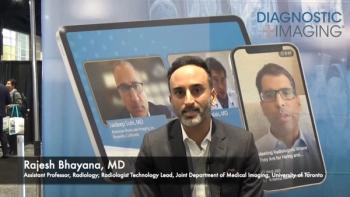
Benefits of CT in Young Adults Outweigh Cancer Risk
Risks of radiation-induced cancer from CT scans in early adulthood are outweighed by the benefits obtained from the scans.
Risks of radiation-induced cancer from CT scans in early adulthood are outweighed by the benefits obtained from the scans, according to a study published online in the journal
Since CT scans have become more commonly used, there have been concerns in the lay press about cancers that could result from the radiation exposure. However, what is often not taken into consideration is the seriousness of the patients’ conditions that require the exams in the first place, such as trauma from a motor vehicle accident, a perforated appendix, or cancer, and the role CT scans may play in patient survival, researchers said.
To address this issue, researchers from Harvard Medical School in Boston analyzed imaging records of 22,000 patients ages 18 to 35 who underwent chest (16,851) or abdominopelvic (24,112) CT scans between 2003 and 2007. This age group was chosen because children and young adults are more susceptible to ionizing radiation and more likely to live for the about 10 to 20 years considered necessary to develop a radiation-induced malignancy.
The researchers found that over an average follow-up of 5.5 years, 7.1 percent of patients who underwent a chest CT and 3.9 percent who underwent an abdominopelvic CT had died. These figures were much higher than the 0.1 percent long-term risk of death from radiation-induced cancer that was predicted by statistical models in both groups.
The high numbers for five-year mortality was surprising to the researchers, Susanna Lee, MD, PhD, said in a press release. “To put it in context, the average young adult has only a 1 percent chance of dying in the next five years.” Lee is chief of women’s imaging at Massachusetts General Hospital and assistant professor of radiology at Harvard Medical School.
According to the study, the most common reasons for the chest CT scans were trauma and cancer. For abdominopelvic CTs, the most common reasons were abdominal pain, trauma, and cancer. Patients who were scanned only one or two times represented the overwhelming proportion of exams.
“When we subtracted out cancer patients from the data set, the risk of death in the study group ranged from 2.5 to 5 percent - still well above the risk in the general population,” said Lee.
Lee also noted that patients in this study were scanned between 2003 and 2007, before radiation dose awareness and education programs had been introduced.
Newsletter
Stay at the forefront of radiology with the Diagnostic Imaging newsletter, delivering the latest news, clinical insights, and imaging advancements for today’s radiologists.




























